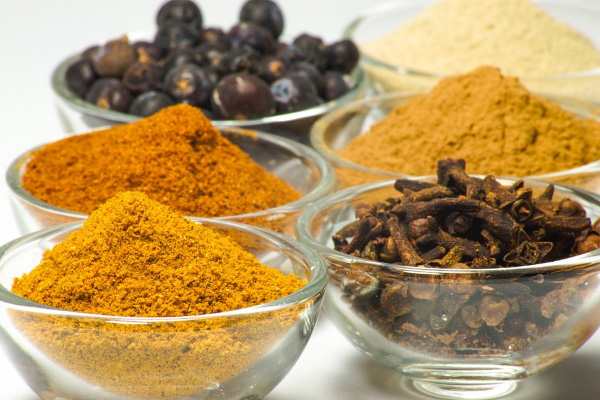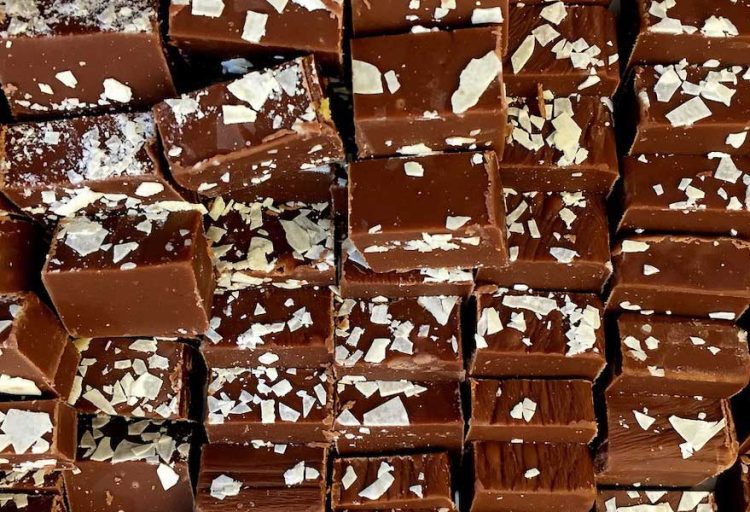Starting out in a new kitchen is exciting, but can be overwhelming. Similarly, clearing through the accumulated debris of a dark and cluttered spice cupboard feels daunting. If you’re anything like me, your spice cupboard is a cluttered melange of jars, tins, and baggies, and includes a few spices bought for a single recipe and never used again that are probably past their prime. It’s a good idea to weed through your spices every year or so to eliminate spices that have lost their flavor. When you’re cleaning out your cupboard, take into account the ones that you use regularly and those that you use rarely (if at all).

Although whole spices last 4 years, ground spices 2-3 years, and dried herbs about a year, they do start to lose their potency after six months. At six months old, you may need to add a bit more of your spices to get the same effect in your recipes. To test your spices, rub a little bit of them in your palm. They should have an immediate, pungent scent. If they don’t, you probably need to replace them.You may want to purchase smaller quantities of spices you don’t use often to cut down on waste.
Whether you’re building from the ground up or just culling your cupboard, these herbs and spices should have a place in your kitchen. I haven’t included two essentials in our list: kosher salt and whole peppercorns. Those belong in every kitchen. I use Diamond kosher salt and stock both black and white peppercorns. Black peppercorns are biting and sharp, while white peppercorns have had the outer skin removed, and are slightly subtler in flavor (and good for use in lighter sauces or on fish).
Thyme
Thyme is a fragrant, woody herb. The dried leaves are best used when they can be rehydrated, such as in stews, sauces, or dips, but they can be substituted for fresh thyme seamlessly. I use thyme when roasting chicken, making gravy, or braising mushrooms.
Basil
Basil is pungent, sweet, and necessary for many Italian dishes. It’s no substitute for fresh basil, which is a tender leaf, but this herb works well in sauces and marinades. I like to use dried basil in my pizza sauce, in marinade for chicken, and in pasta salads, where it won’t wilt and get slimy and brown like fresh basil.
Oregano
Oregano is the herb that makes pizza taste like pizza! It’s virtually interchangeable with fresh oregano, and is essential for Greek, Mexican, and Italian cooking. Most often, I use oregano in marinara sauce, salad dressings, and marinades.
Rosemary
This woody herb looks like pine needles and has a subtly woody, piney flavor. It’s used often in French and Italian cooking, and can have lovely baked applications, as well. My lasagna and flatbreads would be sad without finely chopped dried rosemary leaves!
Fennel Seed
Fennel seeds have a distinctly warm, sweet anise (black licorice) flavor. If you don’t like black licorice, don’t write fennel off entirely– it’s often used in Italian sausage, and lends a subtly unique flavor to Mediterranean, West Asian, and Indian dishes.

Bay Leaves
Bay leaves are highly fragrant, and lend a woody herbaciousness to stews and braises. The leaves aren’t eaten, but are steeped in liquids to impart their flavor, then fished out before serving. I use bay leaves in almost everything I make in the winter months– gravies, sauces, stews, and braises.
Chili Powder
Chili powder is a blend of ground dried ancho chile peppers and other spices, like paprika, cumin, and oregano. It’s essential for Latin American and Tex-Mex cooking. You’ll use it to make American taco seasoning, but it’s also great in chili, rubs, and enchilada sauce.
Smoked Paprika
A little goes a long way with this deep red, smoky spice. Use it in rubs, on deviled eggs, and anywhere you’d like to add a layer of smoky heat.
Cayenne
A pinch of cayenne will lend a hint of piquant heat to quiches, cream sauces, chilis, and dredges. Start with a tiny amount– literally a pinch, about ⅛ of a teaspoon, and taste before you add any more.
Cumin
Cumin has a warm, earthy flavor, essential for Latin American. West Asian, and Indian cooking. I most often use cumin in tacos, chili, braises, and rubs. It’s also essential in spice blends such as curry powder and garam masala.
Ground Cardamom
Cardamom is available in either pods or ground; I recommend ground cardamom because splitting and scraping cardamom pods is such a low-yield, tedious business. Cardamom is sweetly fragrant, and find a home both in cooking and baking. Indian and West Asian cuisines use cardamom regularly in dishes such as Chai, basmati rice, and curries, but cardamom is equally at home in cakes and ice creams.

Curry Powder
There are as many variations of curry powder as their are stars in the sky. Either make your own blend, or try a commercial variety first. I suggest Madras curry powder for its heat, color, and relatively consistent flavor. Use it to make curries (obviously) and to add the smoky, pungent, and unique flavor required in many Indian dishes.
Onion Powder
Onion powder (and garlic powder, for that matter) get a bad rap, but quality versions of these two spices deserve a spot in your spice cupboard. Onion powder is no substitute for actual onions, but in any recipe using onions, it can boost the flavor of the alliums, giving it warm and caramelly undertones. Try it in homey recipes like marinades, seasonings, stews, meatloaf, and spice rubs.
Garlic Powder
Garlic powder or garlic granules are a bit of a cheat code for adding a sweet and subtle garlic flavor. Again, it’s not a substitute for fresh garlic, but it adds punchy depth to spice blends, marinades, sauces, dips, and rubs. I reach for garlic powder when I’m making meatballs, meatloaf, taco seasoning, salad dressings, and marinades.
Ground Mustard
Ground mustard imparts a tangy, acidic bite to stews, rubs, and salad dressings. Try adding it to cheesy sauces or seafood dishes for a bright note.

Cloves
Cloves are a bitter, warm spice that call to mind wintertime treats. A pinch is required for pumpkin pie spice, which shows up in many holiday desserts. Aside from sweet treats, cloves can also bring their warm flavor to Asian cooking. Cloves are found in garam masala blends, and are used in braises and West Asian cooking, as well.
Nutmeg
Nutmeg can be purchased ground or in whole seeds, which I recommend getting, as they keep their flavor much longer. Simply grate the required amount when you need it. Nutmeg is another spice that brings to mind wintertime desserts, but it can also be used in meat dishes, braises, and cream sauces. I add nutmeg to fondue, cream sauces, and bolognese sauce, and use it often with winter squash.
Cinnamon
Cinnamon is actually the dried bark of a ceylon tree– you can get it in dried curls or ground, which is what I prefer. Sweet, warm, and bitter, it’s used around the world from Latin America to India to Europe to Africa. Aside from traditional sweet applications, try adding cinnamon to braises, curries, and even enchiladas.
Ground Ginger
Ground ginger is not a substitute for fresh ginger, but it does add heat and piquancy to baked goods, spice rubs, tagines, and Asian marinades. It’s required for gingerbread and gingersnaps.
Mace
This is probably the least popular spice I have on this list, but I love it so much that I’m keeping it here. It’s the ground exterior of the nutmeg shell, and without it, my winter baking wouldn’t be nearly as good. It tastes almost like a peppery version of nutmeg, and when added to cheesy dishes, souffles, soup, and even fish, it awakens the flavors like nothing else. Try adding a bit more than a pinch to anything that you’d normally add nutmeg or cinnamon to, and see what you think!





All Time Kitchen Tools Guide and Chef's Language Dictionary
[…] Most Essential Herbs and Spices […]